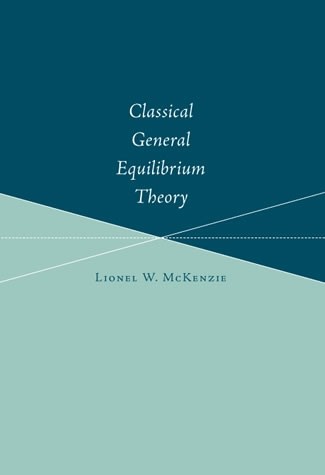Contents
The corporate that have a fixed rate rupee liability use the interest rate swap in order to switch from the fixed rate to floating. In India the only vibrant interest rate swaps market is the Mibor-OIS market which clocks a daily average volume of around Rs.6,000 – Rs.10,000 cr. The INBMK swaps activity is largely restricted to the banks that use it to swap the interest on their tier II bonds. As such the OIS market is the only viable alternative for the corporates to swap their liabilities. The benchmark is known as the FBIL Overnight Mumbai Interbank Outright Rate (FBIL-Overnight Mibor) and CCIL is the calculating agent. BSE gets nod to launch interest rates futures on overnight MIBORMIBOR rate is based on trade-weighted interbank call money transactions on the Negotiated Dealing System call platform of CCIL between 9 am and 10 am.
The LAF also turned into internet absorption mode since December 2008 and remained in significant surplus mode in . A corporate having a fixed rate liability can swap fixed rate into overnight Mibor by Receiving the Fixed rate and paying the daily compounded Mibor. The corporate is likely to benefit from the falling Mibor as the RBI cuts the benchmark Repo & Reverse Repo rates in the near future.
The London Interbank Offered Rate is abenchmark rate of interest at which major international banks lend to at least one one other in the worldwide interbank marketplace for quick-term loans. Accordingly, computation & dissemination of FIMMDA-NSE MIBID – MIBOR for in a single day and three days had been discontinued w.e.f July 22, 2015. The other rates are still being revealed, for which NSE is awaiting further instructions as on date. There will be periodic review of the benchmark strategies to make sure that they’re strong and conform to the most effective governance requirements. Mumbai Inter-Bank Offer Rate and Mumbai Inter-Bank Bid Rate are the benchmark rates at which Indian banks lend and borrow money to each other.
In Focus: RCom, PCJ, Jet Airways most active stocks on NSE
The new benchmark setting is based on “transaction rates’ rather than ‘polled rates’ by banks. That is, it is based on trade weighted inter-bank call money transactions on the Clearing Corporation of India Ltd ’s platform for call money transactions – Negotiated Dealing System -Call platform – between 9 A.M. The trades will be pulled out from the NDS-CALL system immediately after the cut-off time. The approved methodology for the benchmark is also being placed on the websites of FIMMDA and Clearing Corporation of India Ltd. An Internal Committee at NSE for the Development of the Debt Market had studied and recommended the modalities for the development for a benchmark rate for the call money market. Accordingly, National Stock Exchange developed and launched the NSE Mumbai Inter-bank Bid Rate and NSE Mumbai Inter-bank Offer Rate for the overnight call money market on June 15, 1998.
Upon the cessation of LIBOR, clients with LIBOR exposures could find their contracts and hedges no longer operate as intended. Furthermore, delaying the transition could lead to increased exposure to liquidity risk if market volumes are reduced, impacting contract repricing. A “spread adjustment” will then be applied to the relevant adjusted RFR to account for the rate differential between the relevant LIBOR and the adjusted RFR. For cash products, both the Alternative Reference Rates Committee and the Sterling Risk Free Rate Working Group have also recommended the use of a similar five-year median spread adjustment methodology. Banks and corporates face the dangers on their funding portfolios, value of raising working capital on account of the volatility in the motion of interest rates. One of the generally used danger management practices is the use of in a single day index swap .
In India the OIS market is generally dominated by the overseas banks and some of the segments of the OIS market stay fairly illiquid. The ushering of the global economic crisis / sub-prime crisis brought to fore a brand new variable as a measure of monetary well being. The measure is the unfold between 3-month LIBOR and the three-month Overnight Index Swap fee.
The London Inter-bank Offer Rate is the first international benchmark for brief time period interest rates and has been used for pricing and settlement of large kinds of rate of interest and derivative contracts. Hundreds of trillions of dollars value of excellent loans and financial contracts world-extensive are estimated to be linked to LIBOR. Though OIS are quoted in numerous maturities, anecdotal proof indicates that tenors upto five-12 months are liquid .
For derivatives, the International Swaps and Derivatives Association has determined that the compounded setting in arrears rate will apply. Such a methodology will result in an adjusted RFR that is known at the end of the relevant interest period, rather than at the start of the interest period. Interest risk management has assumed predominant importance within the management of any monetary institution after the deregulation of the interest rates. In the deregulated market, each monetary group acknowledges and quantifies its risk-taking urge for food. A debt, fairness or other worth index is used as the agreed exchange for one side of this swap.

The aggregate amount of outstanding interbank/Primary Dealers notional principal referenced to MIBOR remained at INR 16,847.6 billion as on October 31, 2013. Rates on money market instruments in which mutual funds heavily invest–treasury bills, commercial papers, certificates of deposits–have also crashed in tandem. Last week, the government sold 91-day T-bill at the lowest ever yield of 2.98%, the first ever instance of this rate slipping below 3%. Perhaps the most significant of the recent developments in money markets is the unexpected fall in weighted average call rate, which the RBI officially aims to keep closely aligned to the repo rate.
CCIL eyes overseas property buys, Rs 100 cr domestic expansion
It accounts for the liquidity premiums for varied devices traded within the money markets, in addition to an indicator of the health of the general banking system. Call money and call money markets, generally, are characterized by very brief term loans. They can embody institutional individuals corresponding to within the interbank call money market.
- One by one, various benchmark rates have tumbled, with the money markets taking it upon themselves to do what the central bank couldn’t in the last two policy reviews.
- The most significant impact of the downward shift in the weighted average call rate, and consequently MIBOR, has been felt in short-term OIS rates as these are most sensitive to fluctuations in the benchmark.
- It is administered by the Intercontinental Exchange , which calculates the rates on the basis of submissions by panel banks using available transaction data and their expert judgment.
- In a falling interest rate scenario corporates prefer to borrow at floating rates.
The trades might be pulled out from the NDS-CALL system immediately after the minimize-off time. The accredited methodology for the benchmark can be being placed on the websites of Fixed Income, Money Market and Derivatives Association of India and Clearing Corporation of India Ltd . LIBOR can be used as a normal gauge of market expectation for rates of interest finalized by central banks.
Treasury income to cushion PSU banks’ earnings in Q2
Fallbacks are contractual provisions that specify trigger events for a transition from referenced LIBOR rate to a replacement rate along with spread adjustments. Despite the OIS rates easing, the Mibor hasn’t fallen significantly as the LAF liquidity deficit continues to be high at over Rs.1 lakh cr. As such for the corporates there is an absence of a primary market instrument through which they can benefit from the falling https://1investing.in/ interest rates in the economy. Hence it becomes obvious for the corporates to look forward to the derivatives market in order to benefit from the falling interest rates. Public sector banks have made a killing selling bonds at high prices, which will be accounted for in the results for the second quarter of FY17. Institutions are likely to use money for short-term secured investment bets, said Gopal Tripathy.
Besides, the RBI decided to type an impartial body for determining benchmark foreign exchange rate and rate of interest. Till then, the main financial benchmarks had been decided by the Fixed Income Money Market and Derivatives Association of India and Foreign Exchange Dealers’ Association of India . FIMMDA administered rate of interest benchmarks like MIBOR and MIBID whereas the FEDAI administered change rate of rupee. Bringing this spread down subsequently became a serious goal of monetary policy, in addition to a measure of its success in dealing with the market turmoil.
However, in the case of market-wide trends about these indicators being known, market participants can engage in the correct transactions. The Reserve Bank has stated to have advised the benchmark submitter to implement various measures for strengthening the governance framework for benchmark submission. Rates or financial benchmarks are obtained through the collection of interest rate and foreign exchange rate data from market participants like banks by the benchmark administrator. The exchange rate of the rupee obtained daily is published by the RBI after its estimation by the benchmark administrator.
The maximum limit is defined as mean + 3 times standard deviation while the minimum limit is defined as mean – 3 times standard deviation. The tails of the distribution outside the range are treated as outliers and eliminated from the computation. The final volume weighted average rate together with standard deviation for the day is released at 10.45 a.m. Since fund houses do not have access to the RBI’s reverse repo window or call money market, they have been deploying money at dirt cheap rates in the tripartite repo market. The weighted average overnight rate for collateralised borrowing now stands at 2.89%, as against 3.06% a month ago.

MIBOR, which serves as a floating rate benchmark for pricing various fixed-income products, has fallen a hefty 27 bps since Oct 20. The overnight MIBOR was last set at 3.39%, within spitting distance of the reverse repo rate of 3.35%. In preparation for the transition away from LIBOR, various authorities, industry bodies and trade associations have identified certain RFRs as possible replacements for LIBOR and/or are considering how existing benchmark rates might be reformed. RFRs are overnight rates, which traditionally are backward-looking, i.e. are published after the period to which they relate. RFRs are considered to be more robust and representative than LIBOR because transactions in the underlying market inform the determined rate to a greater extent than is currently the case for LIBOR.
What is ‘MIBOR’
This is the official website of Export-Import Bank of India , a specialized financial institution, wholly owned by Government of India. 24 years old Early Childhood (Pre-Primary School) Teacher Charlie from Cold Lake, has several hobbies and interests including music-keyboard, forex, investment, bitcoin, cryptocurrency and butterfly watching. The global crude oil prices continue to threaten the domestic inflationary concerns which have eased off late due to a fall in food prices & Government holding back petrol price hike. Leisure and clubbing major has lined-up a Rs 100 cr investment over 2 years to set up a chain of country spas pan-India. The banks, in turn, dismissed the accusations, saying they were merely acting in their own defence. Here’s a list of top stocks that may hog the limelight in today’s trading session.
Just like the interbank borrowing market, the collateralised lending market or tripartite repo has effected a rate cut of its own, but driven by entirely different factors. Given the overall fall in call money trade volumes amid surplus liquidity, the hefty amount of fund borrowed by the single entity at a higher rate played a role in determining the overnight mibor stand for weighted average call rate. After all, the extent of the current liquidity surplus, estimated at around 5.8 trln rupees, is not much higher than what it was in the first two weeks of October, and money market rates were just fine back then. Clearly, something has changed for money market rates to cross key threshold levels over the last few weeks.
Rates on commercial papers and certificates of deposits tell a similar story – that India’s money market rates stand divorced from the RBI’s interest rate regime. ICE LIBOR provides an indication of the average fee at which a LIBOR contributor financial institution can obtain unsecured funding in the London interbank marketplace for a given period, in a given currency. Individual ICE LIBOR charges are the top-product of a calculation based upon submissions from LIBOR contributor banks.ICE Benchmark Administration maintains a reference panel of between 11 and 18 contributor banks for every forex calculated. Every morning, MIBOR is calculated on the basis of traded rates of a dozen banks in the first hour of the market.
Vishing is a deception technique where the fraudster uses a phone call to lure you into giving your personal confidential banking information. “The obvious explanation is that the bank was running a deficit and has a large book, and therefore was going to call,” said a senior treasury official at a foreign bank. “But that still does not exactly explain why they were paying so much more than the others.” We will periodically update this page and provide communications relating to the changes. In the meantime, if you require any further information, please contact your Relationship Manager. India Exim Bank may also provide you with product or service specific information which you should consider carefully.


